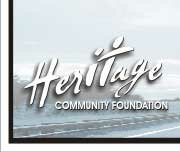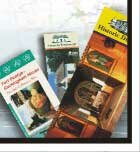
| Home | Search | Sitemap | Help | Contact | Sponsors |
|
|

|

|

|

|
| Home >> Article Database >> Official Opening of the Alberta Gallery |
|
Official Opening of the Alberta Gallery by Jacqueline Chartier An open-air performance of Tchaikovsky’s 1812 Overture complete with bells and gun fire was a fitting way for Calgary’s Museum of the Regiments to officially open its new Alberta Gallery. Pride, patriotism and a sense of exultation were clearly evident – the dramatic musical score appeared to fit the mood perfectly. Since its establishment nearly a decade ago, the Museum of the Regiments has evolved to become Western Canada’s largest military museum. It honors the courage, commitment and sacrifice of all those who have served in the Canadian Armed Forces. While its focus is primarily on the military experiences of Calgary and Alberta, the museum has significance for all Canadians. Until recently the museum has consisted of four permanent galleries. The facility houses the regimental collections of the Lord Strathcona’s Horse (Royal Canadians), Princess Patricia’s Canadian Light Infantry, The King’s Own Calgary Regiment (RCAC), and the Calgary Highlanders. The museum is organized so that each of these four regiments has its own gallery with displays specific to their own history. In addition there is the Imperial Oil Gallery which is designed to house special or temporary exhibits and displays. The addition of a fifth permanent gallery, the Alberta Gallery, marks another milestone in the museum’s development. The 1,800 square foot gallery cost approximately $250,000 to construct and contains 15 exhibits. With funding provided by the Department of National Defence, the Alberta Community Facility Enhancement Program and Museums Alberta the directive of the project was to provide a broad overview of Alberta’s military history from the 1870s up until the present day.
Visitors touring the Alberta Gallery go through several corridors housing displays of provincial Regular Force Units, Militia Units and Branches. The gallery is arranged chronologically as well as by theme or topic. The first dominant display is a mural and lifelike diorama depicting the arrival of the North West Mounted Police in 1874. Their mission was to stop the whiskey trade, establish law and order and improve relations with the First Nations people. Next, the gallery turns to 1885 with an exploration of the role of the Alberta Field Force and others involved in the Northwest Rebellion. Going through the Alberta Gallery, a visitor is struck immediately by two things: the use of state of the art technology to bring the past to life and the use of both official languages. There are sound and electronic components to virtually all of the major displays and the visitor is given the choice of experiencing the displays in English or French. With the outbreak of the First World War, a large training centre, known as Sarcee Camp, opened in Calgary. A large display features the camp as well as the famous numbers on Cairn Hill (Signal Hill) that were used to signify particular batallions. Today these numbers continue to be a highly visible landmark. The Alberta Gallery also recounts the stories of Calgary’s historic Mewata Armoury, Currie Barracks and Sarcee/Harvey Barracks. Another highlight that visitors will not want to miss is the display representing the Canadian Air Force. Present in Calgary from 1936 until the early 1960s, the RCAF trained initially at Currie Airfield and then at Lincoln Park Station. During the Second World War, Lincoln Park became one of the centres for the British Commonwealth Air Training Plan. During this period, nearly 132,000 air crew members from the United Kingdom, Canada, Australia and New Zealand were trained.
Additional displays include showcases on 1 Service Battalion, 1 Field Ambulance and the Signal Corps as well as on the Canadian involvement in United Nations peacekeeping duties and the 41 Brigade Group that commands the province’s 1700 "citizen" soldiers. The final display in the Alberta Gallery, "Aboriginals in the Service," brings the gallery full circle. Starting with the story of the First Peoples and concluding with a modern story of those Aboriginals who have chosen to serve with the Canadian military, visitors are certain to find this an appropriate summation to over one hundred years of Alberta’s military history. According to Ian Barnes the addition of the Alberta Gallery to the Museum of the Regiments has been a great benefit. "I hope that all former members of the army and air force will now consider the Museum of the Regiments as their home and specifically the Alberta Gallery as the repository of the units’ heritage." The Museum of the Regiments is located at 4520 Crowchild Tr. S.W., via the Flanders Avenue exit. It’s open daily from 10 a.m. to 4 p.m. except Wednesdays. For information phone or visit their internet site at http://www.museumoftheregiments.ca/ Jacqueline Chartier is a Calgary-based writer. She received her B.A. in English from the University of Calgary and also holds a journalism arts diploma from Mount Royal College. She is a volunteer at the Museum of the Regiments. |





 For retired Col. Ian Barnes, the Executive Director of the Museum of the Regiments, the Alberta Gallery is the culmination of a dream. "For me it has been a rewarding experience to watch my original vision become a reality. It has taken many hours of planning, discussing, meeting and work, much of it by volunteers, to build the gallery," said Barnes.
For retired Col. Ian Barnes, the Executive Director of the Museum of the Regiments, the Alberta Gallery is the culmination of a dream. "For me it has been a rewarding experience to watch my original vision become a reality. It has taken many hours of planning, discussing, meeting and work, much of it by volunteers, to build the gallery," said Barnes. Established on August 13, 1941, the Canadian Women’s Army Corps played a vital role during the Second World War and they are also honored with a prominent display in the Alberta Gallery. Of the total 21,624 women that served in the Canadian Women’s Army Corps, 1,914 were from Alberta. While not allowed in combat, members of the corps provided essential support in the clerical and technical trades.
Established on August 13, 1941, the Canadian Women’s Army Corps played a vital role during the Second World War and they are also honored with a prominent display in the Alberta Gallery. Of the total 21,624 women that served in the Canadian Women’s Army Corps, 1,914 were from Alberta. While not allowed in combat, members of the corps provided essential support in the clerical and technical trades.